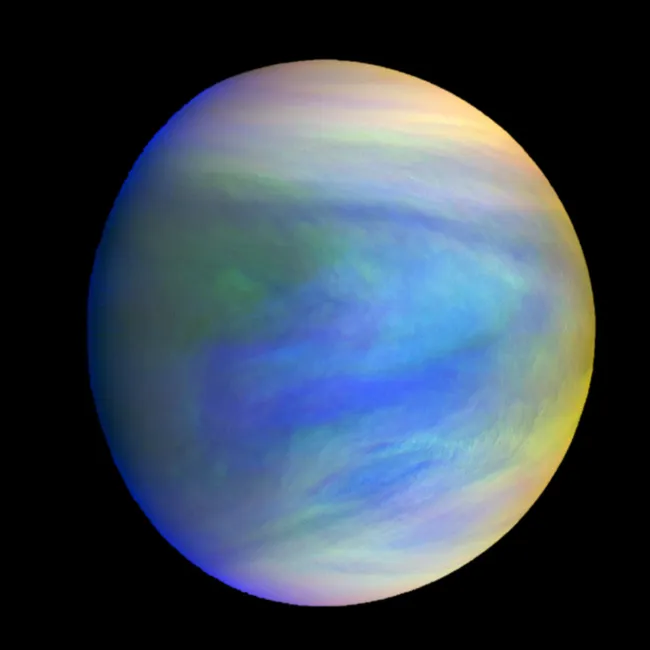Scientists said Monday they have discovere the clouds of Venus the presence of Phospin, Life on Venus,Is the possibility of aliean being our neighbor!!!
WASHINGTON: Scientists said Monday they have discovered a gas called phosphine in Venus's hard acid cloud, indicating that the germs are the Earth's essential homeless neighbors, which could prove to be an intimate sign of possible life beyond Earth. Although researchers have not been able to discover real-life evidence, they are making great strides, noting that phosphine gas on Earth is produced by bacteria in oxygen-starved environments. So the neighboring planets near the earth are looking for life on venus.
 |
Image -Cdn/NASA file image
The International Scientific Team used the James Clark Maxwell Telescope, the first Hawaiian to observe their observations.
"I was really surprised - stunned," said Jane Graves, an astronomer at Cardiff University in Wales and lead author of the study, published in the journal Nature Astronomy. The existence of extraterrestrial life has long been one of the major questions in science. In our solar system and beyond, on other planets and stars, scientists on the moon have used advanced probe and telescope to search for "biosynthesis" - indirect signs of life.
According to Clara Srasa-Silva, a molecular astrophysicist and co-author of the study at the Massachusetts Institute of Technology, "what we now know about Venus is the most admirable argument for phosphine, which seems as imaginative as life itself." "As an explanation of our discovery, I will emphasize my interpretation of that life, as always, the last resort," said Srisa-Silva. “This is important because if the gas is phosphine and
"If this is life, it means that we are not alone. This also means that life is very normal, there must be other planets and many more planets across our galaxy in which life like Venus can exist.
What is Phosphine
Phosphine - a phosphorus atom with three hydrogen atoms attached - is highly toxic to humans. The Earth-based telescopes used in this study are one of the components of scientists' study of chemistry and celestial objects. In the Venetian atmosphere phosphine has been observed in 20 parts per-billion, a trace density of phosphine.
Grace said that "various researchers have examined possible non-biological sources such as volcanoes, meteors, lightning and various chemical reactions, but none were logically appropriate. The current study will either confirm the presence of life on Venus or offer alternative explanations."
Structure of Venus
Venus is the nearest neighboring planet to Earth. Similar in size but slightly smaller than Earth, it is the second planet from the Sun. The world is third. Venus is covered in a dense, toxic environment that is trapped in heat. The surface temperature reached 880 degrees Fahrenheit (471 degrees Celsius), enough to melt the lead.
"I can only guess what life on Venus might have survived, if it really did. No life would be able to survive on the surface of Venus, because it's completely hospitable, even completely different from us for biochemistry," said Srisa-Silva. A long time ago, Venus could have lived on its surface. A greenhouse effect has left most of the planet completely uninhabited. "
Acid test
Some scientists suspect that with Venetian high clouds, clouds with a light temperature of about 86 degrees Fahrenheit (30 degrees Celsius), gaseous germs could be its refuge. Which can tolerate extreme acidity. These clouds contain 90% sulfuric acid. Earth's microorganisms cannot survive in that acidity.
Life on Venus The presence of microorganisms in phosphine gas
Video - Quick News
“If it’s microorganisms, they may have access to some sunlight and water and live in liquid droplets to stop themselves from dehydration, but they will need some unknown method to protect them from corrosion by acid,” Graves said. On Earth, microorganisms in the "anaerobic" environment - ecosystems that do not depend on oxygen - produce phosphine. Organisms that are sewage plants, waterlogging, paddy fields, wetlands, lake sediments and the faeces of many animals and intestinal nets - live germs or microorganisms.
Phosphine is non-biologically synthetic in some industrial management. In the production of phosphine, earth's bacteria use minerals or organic matter to extract phosphate from it and cause hydrogen bonding. "We have tried our best to explain this discovery without any biological process. With our current phosphine, and our knowledge of Venus and geochemistry, we explain the presence of phosphine in the Venus cloud. This does not mean life. It means another process externally. Is making phosphine. And we need to experiment to understand Venus, "said Clara Sausa-Silva.
Venus may be hostile to phosphine. Its surface and atmosphere are rich in oxygen compounds. Which reacts quickly with phosphine and can destroy phosphine. Anita Richards, co-author of the study of astronomy at the University of Manchester in England, said, "Something is definitely making phosphine as fast as Venus is being destroyed. "
The previous robotic spacecraft, whose destination was Venus, needed a new test to confirm life. "Fortunately, Venus is right next door," said Srisa-Silva. "So we can literally go and test. The alieans who were dreamy, elusive, in reality have been with us for so long, they may have kept themselves hidden.
Post a Comment
Don't allow spam link